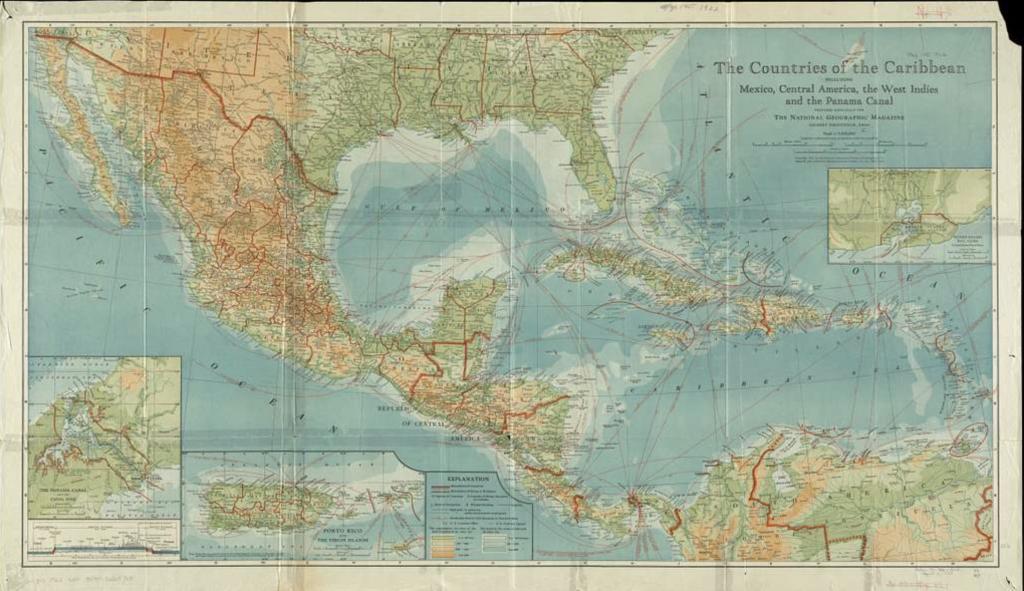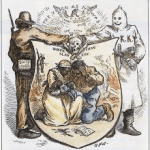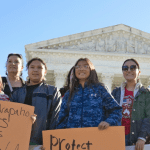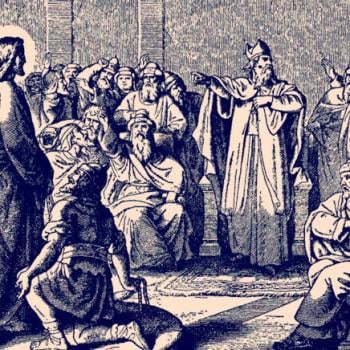I recently posted about the critical importance of the Caribbean dimension in American history. The same observation holds true about present day realities, but issues of labeling mean we tend not to see it. But without that Caribbean dimension, we miss a huge amount about contemporary American life, including its urban, social, and political history. The religious angle is unavoidable.
Bear with me as I try to find and define the Caribbean. It is an important question, and the answer is not obvious.
If I asked someone at random to think of images associated with Caribbean people and cultures in the United States, they might offhand mention Rastafarians and reggae, which unquestionably fit the bill. Both, of course, come from the English-speaking world of Jamaica. But many other people come from societies that historically had a vast amount in common with Jamaica, but to whom we apply different labels. Some of those groups we call Latinos (Cubans, Dominicans); some are Blacks (Haitians, Jamaicans); and some are Latinos who are not immigrant, because they are US citizens (Puerto Ricans).
That label “Latino” is troublesome. As it stands, it is an overarching linguistic term, to which we attach all sorts of non-existent commonalities. On closer examination, those Hispanic groups differ enormously in many respects: it always pays to ask “which Latinos are you talking about?” In the Caribbean context, the label prevents us seeing the strong and very distinctive forces that distinguish people from the Hispanic Caribbean from those of nearby mainland territories, from Mexico and Central America, never mind Bolivia or Chile. Meanwhile, those Spanish-speakers share a great deal culturally with neighboring Caribbean people who use English or French or Dutch. Obviously the groups are diverse in many ways, but that Caribbean idea is really valuable.
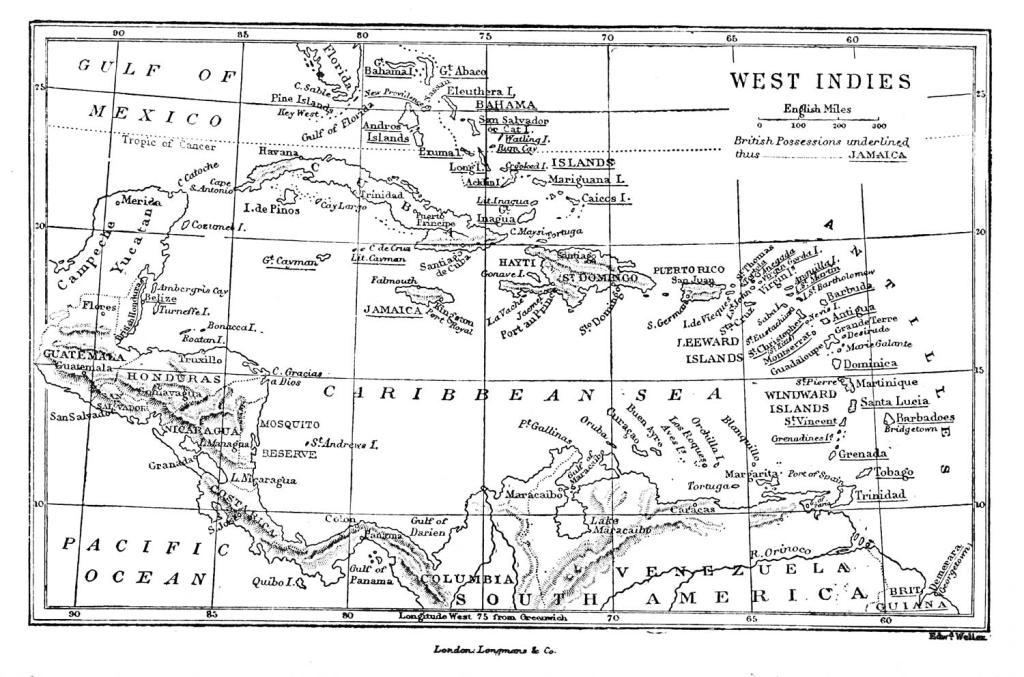 So where do we find “Caribbean” cultures? Mexico has a Caribbean coastline, as do (say) Venezuela or Colombia, but in so many ways – cultural, ethnic, historical – these countries differ massively from islands such as Jamaica or Haiti. Yet together, all those diverse lands are part of the larger Caribbean region. So how do we distinguish mainland and islands, Mexico and Jamaica?
So where do we find “Caribbean” cultures? Mexico has a Caribbean coastline, as do (say) Venezuela or Colombia, but in so many ways – cultural, ethnic, historical – these countries differ massively from islands such as Jamaica or Haiti. Yet together, all those diverse lands are part of the larger Caribbean region. So how do we distinguish mainland and islands, Mexico and Jamaica?
Once upon a time, observers drew a well-known distinction between the larger Caribbean and the island cultures that English-speakers labeled the West Indies. That usage became problematic in the 1950s as the term often came to refer specifically to the British West Indies, excluding non-Anglophone regions like Cuba and Haiti. There actually is a perfectly good geographical term for the islands as opposed to the mainland, and the French and other Romance languages call the whole archipelago the Antilles. Spanish knows las Antillas. The problem is that this is just not a familiar term for English-speakers. If anyone says they are going to the Antilles, that presumably means one of the more exotic French or Dutch territories, but certainly not the Dominican Republic or Jamaica, say, or Puerto Rico. In common speech, as opposed to technical geographical language, all those island territories would be comprehended under the label “the Caribbean,” which would really not apply to Nicaragua or Mexico or Venezuela. Nor would it apply to south Florida, although that is part of the larger region. To illustrate this point, I thank the esteemed publication Southern Living for a recent article helpfully entitled “20 Florida Beaches That Could Pass For the Caribbean.”
Technically, and counter-intuitively, the Caribbean islands are a sub-region of North America, not of Central or South America. I won’t get into this here, but many geographers combine the Caribbean Sea and the Gulf of Mexico into the “American Mediterranean Sea.” Evocative phrase! The subject of a future blogpost, I hope.
For present purposes then, I am going to use the term “the Caribbean” to refer to the island region, what the French, say, would call the Antilles. (Geographers may at this point leave the room in a huff). So in this sense, how can we define the Caribbean region?
Those distinctively Caribbean forces and factors include the overwhelming heritage of colonialism, imperialism, and African slavery, but above all – growing out of the heritage of slavery – the resulting ethnic balance. The very strong African context must stand front and center. The Caribbean lands – the Antilles – are firmly part of the African Diaspora in ways in which Mexico, Guatemala, and other sources of US migrants are not. I know that those countries also received a lot of African slaves, but that heritage does not survive as an ethnic or cultural force in anything like the way it does in the islands. African roots account for some two percent of Mexico’s population, and the Guatemalan figure is 0.3 percent, compared to perhaps fifty percent or more in Cuba, and far higher proportions in Trinidad or Jamaica. Costa Rica is an anomaly here. Its African-derived population is around eight percent of the whole, which is quite high, but most of those descend from post-emancipation transplants from Jamaica – that is from the Black Caribbean.
Conversely, Caribbean lands lack the very pronounced Native American foundations that so characterize Mexico, or much of Central and South America. Yes of course, Native populations and bloodlines survived on the Caribbean islands, but there is nothing like the cultural or linguistic inheritance that you find in Mexico, where around 25 million identify as indigenous, and many of those retain some Native language such as Mixtec. (One valuable book on the Native theme in the islands is Tessa Murphy, The Creole Archipelago: Race and Borders in the Colonial Caribbean (University of Pennsylvania Press, 2021).
In much of the Caribbean region too, formal European or North American political domination lasted much longer than in mainland states (Haiti is the obvious exception). The British withdrew only in the 1960s. The French and Dutch still exercise a ghost of imperial rule in their respective possessions, and Puerto Rican nationalists would levy a similar imperial charge against the US.
On all those counts, the Caribbean region differs substantially from Central or South America, and sufficiently to make us see it as a worthwhile category. By these criteria, incidentally, the region includes not just the islands but the mainland states of Guyana and Suriname.
When we remove the artificially imposed boundaries, and look at the larger Caribbean context for US migration, then the numbers are impressive. Today, some fourteen million Americans claim Caribbean ancestry, some 4.3 percent of the national total. In 2016, the largest contingents were Puerto Ricans (5.6 million); Cubans (2.3 million); Dominicans (two million); Jamaicans, and Haitians (one million each).
This is a very new reality historically. If we exclude Puerto Ricans as being citizens rather than immigrants, then in 1930, the figure for Caribbean-born immigrants in the US was a paltry 100,000, rising to 200,000 by 1960; one million in the late 1970s; three million by 1990; and approaching five million today. All told, these represent around 10 percent of the country’s total immigrant population. Partly, that growth was a consequence of the 1965 Immigration and Nationality Act, which eased admission for non-White migrants, but it also reflected political circumstances, with the arrival of anti-Communist Cubans. Rarely noticed by non-specialists has been the sizable and very recent Dominican influx. In 2020, the Dominican Republic accounted for 30,000 immigrants, the fourth largest category, right behind China and India.
By way of comparison, the US has around eleven million Mexican-born, the largest single contingent of all our immigrant groups. The story of modern immigration to the US can be summarized as “Mexicans, and then everybody else.” But when we take all the Caribbean peoples together, they are not that far behind.
Obviously, the Caribbean numbers are not spread equally across the whole country. The heaviest concentrations are in major East Coast cities, and in Florida, but all major metropolitan areas have their share. I do not mean to trivialize when I say that this reality is especially obvious in terms of the kinds of food available in different urban neighborhoods, which might be physically very close but which represent such very different cultural traditions.
That fact of origins echoes through political life. Some scholars talk of the Caribbeanization of Black urban politics. But also think of the religious consequences, which have been so dramatic for Catholic congregations in cities affected. Look for instance at the role of faithful Haitians in Boston, or Cubans in Miami, where they have transformed older churches. We are very familiar with the story of “Latinos” drifting from Catholic churches to evangelical and Pentecostal congregations, or to being outright Nones. But so much of that story is specifically a Caribbean tale, with its sharpest impact on Puerto Ricans: these are in fact the most Protestant of all Latino groups. Many Haitians have also moved to evangelical churches. Different churches have benefited, but some denominations in particular have found a significant stronghold in the Caribbean, and among Caribbean migrants. Witness the Seventh Day Adventists.
Then, of course we have all the famous African-derived traditions of the region, the Santeria, Obeah, Vodou/Voodoo, and the rest. All have found remarkable new life and vigor in North American urban settings. And there really are Rastafarians, whose cultural impact far exceeds their raw numbers. African influences are apparent in the Spiritual Baptist churches, the Shouters or Shakers, who mainly stem from Trinidad and Tobago, and who have a number of congregations across North America and England.
In large measure, academic studies of urban immigrant religion in the contemporary US – and there are many such – spend a great deal of their time looking at the diverse and steadily diversifying forms of Caribbean faith.
Older imperial ties, together with the issue of language, determine the global perspectives of those communities, and that has religious implications. After the Second World War, people from the British Caribbean migrated in large numbers to Britain and Canada, while Francophones naturally gravitated to France, or to Québec. That created a number of overlapping Caribbean Diasporas. A Caribbean-derived congregation in a US city might well have lots of relatives in London or Toronto (or Montreal), encouraging the transmission of ideas and beliefs, and the movement of church leaders.
When considering these sizable Diasporas, in North America and Europe, we should recall the relatively small size of the population of the Caribbean region as I am defining it here. There are only some 45 million people, ninety percent of whom inhabit the five Greater Antilles, of Cuba, Haiti, Dominican Republic, Jamaica, and Puerto Rico. Diaspora people thus represent a disproportionately large share of the whole “global” Caribbean population, making this region one of the world’s major senders of migrants.
Through the years, I have spent a lot of time writing about how Global South religion (and especially Christianity) has established itself in the United States, and will transform our religious scene. I focused above all on communities from Africa and Asia, with broad statements about Latin Americans. I was badly understating that Caribbean role, precisely because it was so close, and so familiar. I will do better in future.


